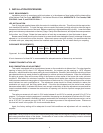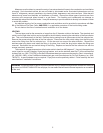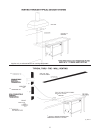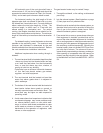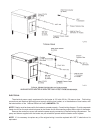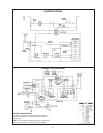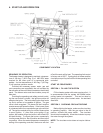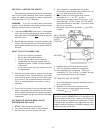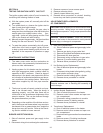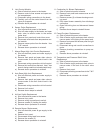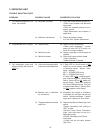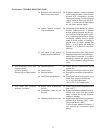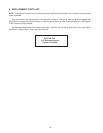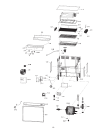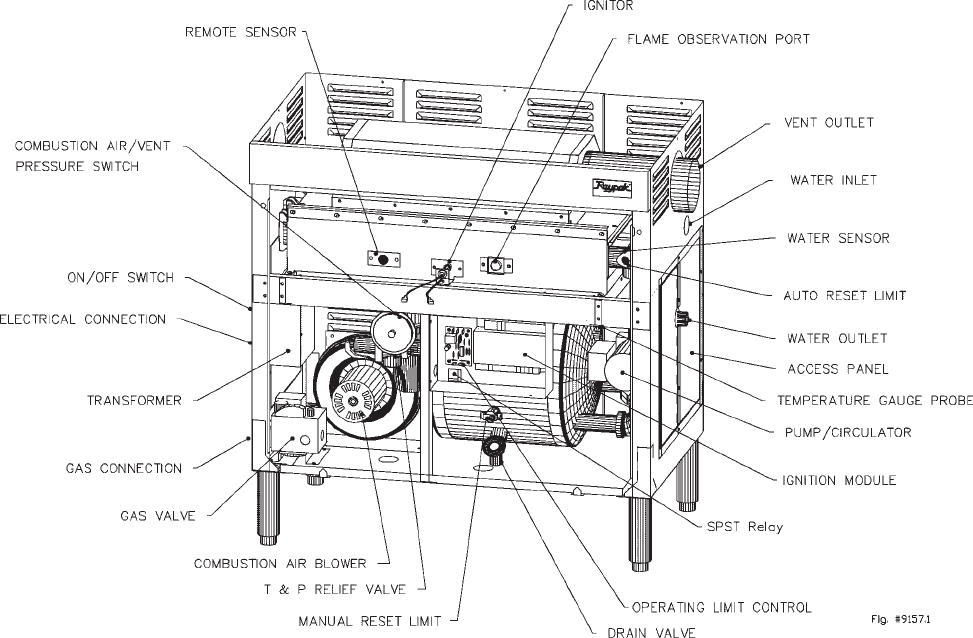
SEQUENCE OF OPERATION
The booster heater is designed to maintain a tempera-
ture of 180 deg. F (82.2 Deg. C) of 490 GPH water
required for the rinse cycle of a commercial dish-
washer. An inlet temperature of 140 Deg. F (60 Deg.
C) will produce optimum results.
Provided the necessary power, water, gas and
vent connections are completed, the unit is started by
the activation of the on/off switch located on the left side
panel. The blower motor and the circulator pump will
also start.
Providing the operating and safety controls includ-
ing the vent switch is closed, the ignition module will
energize the ignitor. The hot surface ignitor then heats
up, and is proven to be capable of ignition. The gas
valve is then energized. The burner will be lit and the
remote sensor will sense the flame. If the burner flame
is not sensed within four seconds the gas valve will shut
off. The ignition module will try for a total of three cycles
to prove ignition. If, after third cycle ignition is not
proven, the module will go into lockout, and a Red-LED
will start blinking. To recycle the burner, momentarily
turn the power switch to the off position and then to the
on position. When the water temperature exceeds the
setting of the operating controller, the burner will shut
off until the next call for heat. The operating limit control
is factory set at 185°F. Combustion air blower and the
circulator pump will cycle On/Off with the operating limit
controller.
START UP PROCEDURES
SECTION 1. FILLING THE SYSTEM
Fill the heater system with water purging all air. It
is recommended that the system be flushed before
putting heater into operation . This can be done by
opening the drain valve located under the stainless
steel tank.
SECTION 2. CHECKING CIRCULATOR/PUMP
Before lighting the heater, make sure the circulator
is operating properly. With the gas valve in the off
position, activate the power switch. The circulator
should start immediately. Allow the circulator to pump
the water through the system.
NOTE: The circulator motor does not require lubrica-
tion.
12
4. START UP AND OPERATION
COMPONENT LOCATION



